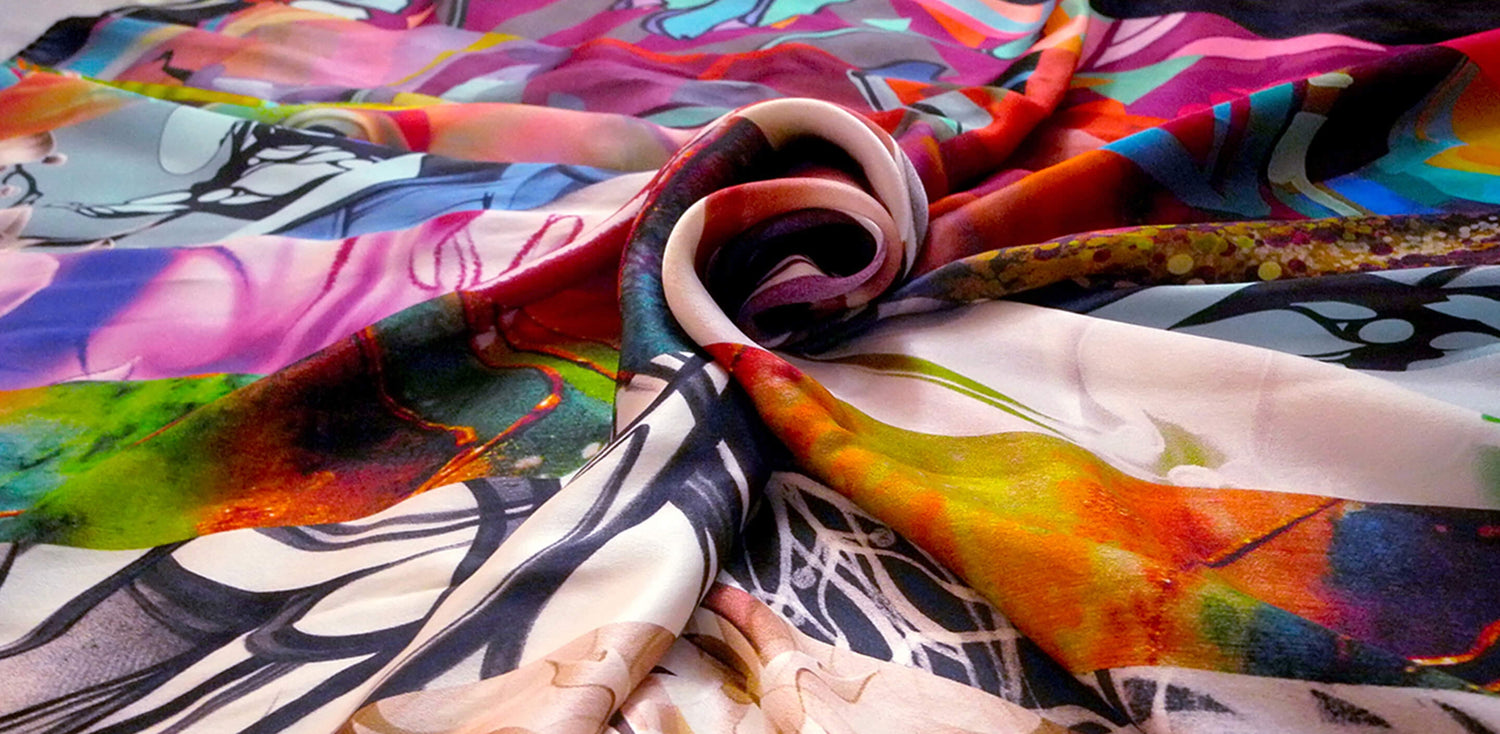Traditional printing

Block printing, screen printing, and roller printing are the three most prevalent conventional printing processes for commercial printing fabric manufacturing, however there are numerous more ways to print patterns onto fabrics.
Block printing

The original technique of printing, block printing, is the simplest but also the slowest. Fabric is imprinted with a pattern using wooden blocks with incised designs. Producing intricate and beautiful prints is a lengthy and laborious procedure.
Screen printing

Today, screen printing is the most widely used traditional printing fabric method. Squeezing ink or printing paste through tiny holes on a flat or rotating screen creates a desired pattern. To get the desired hue, each color must pass through its own mesh.
Roller printing

In order to print on large bolts of cloth efficiently, roller printing is still widely utilized. In this process, the fabric is passed through the machine while the printing paste is applied to it by an engraved metal roller. Each of the design's colors has its own specialized roller.
When it comes to quality, classic offset printing is unrivaled. However, in the world of fast fashion, where trends come and go quickly, innovation was required. Because of how rapidly fashion changes, a new printing method has to be created. Digital printing is less expensive than offset printing, and it may be done much more quickly for jobs with a low volume.
As a result, digital printing is very advantageous for businesses of all sizes, not only the major fast fashion firms like Forever 21 and H&M who have adopted this new technology due to the cheap minimums associated with print orders.
Digital printing

Digital printing is great for high volume runs that need quick turnarounds. Digital printing's versatility and quick turnaround time make it an attractive option in the apparel and textile sectors, among many others. Digital printing makes it possible to make changes to designs without substantially slowing down production. Companies may make prototypes that are almost identical to the final product because of these characteristics; if the prototypes don't work as planned or need to be revised, the designers won't have to worry about major delays in the manufacturing schedule.
The new method is convenient for designers who need to make a few of anything at a time since the low order minimums mean they can do it without spending too much or waiting too long. As an added bonus, unlike the above-mentioned conventional printing techniques, digital printing doesn't have any restrictions on design dimensions, repeats, or color counts. Because of how simple technology is to use, a whole market has developed around digital printing; the Print On Demand (POD) sector now allows ordinary people to make one-of-a-kind prints for a wide range of items.
Although it may seem that digital printing is the pinnacle of the printing industry, it is not without its drawbacks. For instance, in comparison to offset printing, digital printing cannot reproduce colors to the same degree of accuracy. Cracks at the design's borders appear because the ink does not completely seep into the cloth. Additionally, conventional lithographic printing's price per unit decreases as order quantity increases, making it more cost efficient than digital printing if you want to purchase a big bundle. Designers must often consider these compromises alongside digital printing's many advantages. High-end designers who strive for perfection may find that digital printing falls short of their expectations.
Digital printing might be a game-changer for your business, but that depends on the specifics of your application, budget, demand for wholesale fabric, timeframe, and quality expectations. Before settling on a certain printing technique, it's important to weigh the benefits and drawbacks of each option carefully.
FAQ
What is the modern printing process?
Sheet fed gravure machines (for quantities of 10,000 to 100,000) and web-fed Rotogravure presses (for larger runs) are used to print from big copper plates or copper coated cylinders. Film exposures of the artworks to be copied are made, and they are then used to create the copper plates or cylinders.
What is one of the most popular printing techniques?
Offset printing, often known as offset lithography, is by far the most used printing technology. Plates are made for each color used in offset printing.
Why is traditional better than digital?
Unlike digital art, which can be easily replicated, traditional works of art are one-of-a-kind creations. Unlike manufactured goods, handcrafted items are one-of-a-kind due to the nature of the making process.
We also happen to be a magnet for suggestions, and would love to catch yours….throw us yours on hello@fabriclore.com
Become a part of our creative world on Facebook & Instagram




